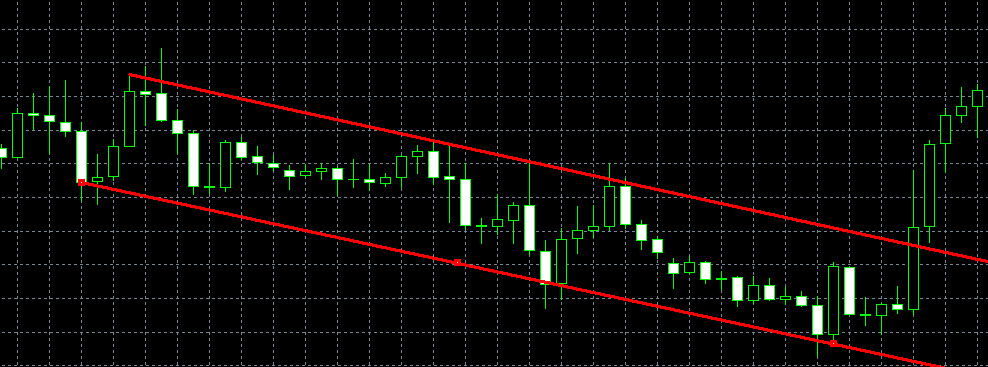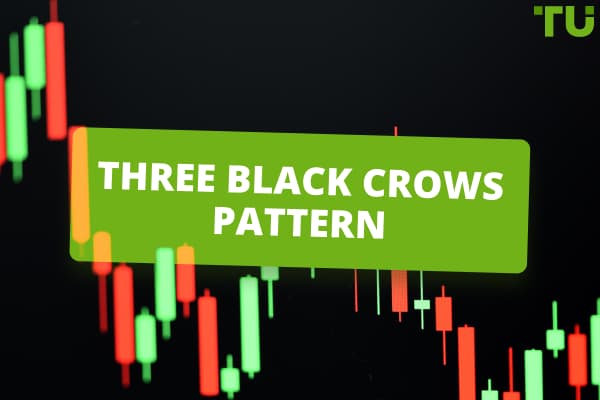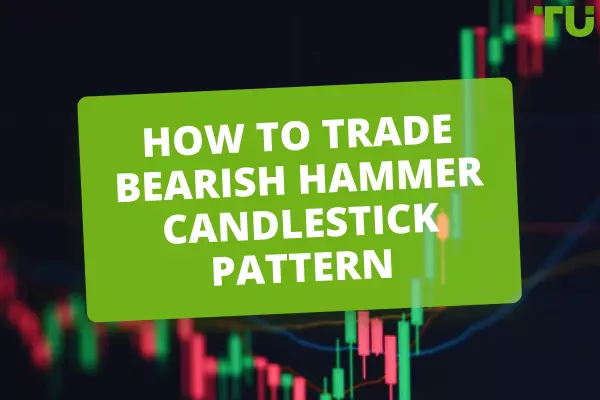Types Of Channel Strategies In Forex
Types of channel strategies:
-
Trend trading on a breakdown of the channel boundaries. An impulse breakout when exiting a horizontal channel can mean the start of a strong trend
-
Trading for a rebound inside the channel. An intraday strategy that assumes that the price, in the absence of a pronounced trend, most often returns to its equilibrium value
Channel strategies in Forex are based on the assumption that the price moves within a certain range, bounded by support and resistance lines. These lines are constructed on the basis of historical price data and can be used to predict future price movements.
Do you want to start trading Forex? Open an account on RoboForex!What are channels in trading?
In trading, channels are a technical analysis tool used to identify the range within which the price of an asset fluctuates. There are two main types of channels: horizontal and sloping (trend channels).
Horizontal Channels:
-
Construction: Horizontal lines are drawn, connecting two or more high or low price points. This type of channel displays resistance and support levels
-
Interpretation: Breaking above the upper boundary may signal potential price increases, while breaking below the lower boundary may indicate potential decreases

Sloping (Trend) Channels:
-
Construction: Requires two lines connecting consecutive highs or lows. This creates a zone within which the price is inclined to move
-
Interpretation: The channel lines help identify trends. If the price stays within the channel, the trend is considered intact

Channels serve as a powerful tool for identifying trading opportunities, understanding trends, and determining resistance and support levels. It's crucial to note that successful channel analysis requires confirmation from other indicators and a comprehensive market assessment.
Types of channel trading systems
There are many different types of channel strategies, which differ in how they construct the support and resistance lines.
Here are some of the most popular types of channel strategies:
-
Equally spaced channels are constructed on the basis of two parallel lines, spaced the same distance apart. The distance between the lines is calculated on the basis of the price's standard deviation
-
Fibonacci channels are constructed on the basis of Fibonacci levels. These levels represent important support and resistance points that are often used in technical analysis
-
Linear regression channels are constructed on the basis of a regression line, which is a line that best describes the price trend
Channel strategies can be used to trade in both directions, both with the trend and against the trend.
Here are some of the most popular trading strategies based on channels:
-
Trend trading involves buying or selling a currency pair when the price breaks through a support or resistance line in the direction of the trend
-
Bounce trading involves buying or selling a currency pair when the price bounces off a support or resistance line
Channel strategies can be effective for trading in Forex, but it is important to use them in conjunction with other technical indicators to improve the accuracy of predictions.
Trend Trading
Trend trading is a strategy that involves buying or selling an asset in the direction of the existing trend. The trend can be uptrending, downtrending, or sideways:
-
Uptrending is a situation where the price of an asset is moving up. In this case, traders buy the asset, expecting the price to continue to rise
-
Downtrending is a situation where the price of an asset is moving down. In this case, traders sell the asset, expecting the price to continue to fall
-
Sideways trending is a situation where the price of an asset is moving in a horizontal direction. In this case, traders can use various strategies, such as counter-trend trading or trading on bounces
Entry
To enter a trend trade, traders must identify that a trend exists. This can be done using various technical indicators such as trend lines, trend direction indicators, and volatility indicators.
After a trend is identified, traders must choose a point of entry. In an uptrending, the point of entry can be placed at the support level or at the moment of a breakout of the resistance level. In a downtrending, the point of entry can be placed at the resistance level or at the moment of a breakout of the support level.

Exit
To exit a trend trade, traders must place a stop-loss and a take-profit. A stop-loss protects the trader from large losses if the trend changes. A take-profit allows the trader to lock in profits if the trend continues in their favor.
Trading on Bounces
Trading on bounces is a strategy that involves buying or selling an asset after it has bounced off a support or resistance level. This strategy can be used both in the direction of the trend and against the trend.
Entry
To enter a bounce trade, traders must identify that a support or resistance level is strong. This can be done using various technical indicators such as volume indicators and volatility indicators.
After a support or resistance level is identified, traders must choose a point of entry. In an uptrending, the point of entry can be placed at the support level or at the moment of a breakout of the resistance level. In a downtrending, the point of entry can be placed at the resistance level or at the moment of a breakout of the support level.

Exit
To exit a bounce trade, traders must place a stop-loss and a take-profit. A stop-loss protects the trader from large losses if the price continues to move in the direction of the trend. A take-profit allows the trader to lock in profits if the price continues to move in the opposite direction of the trend. You can also be interested in information about best take-profit strategies.
Best Forex brokers


Advantages and disadvantages of channel strategies
👍 Advantages of Channel Strategies
• Ease of use. Channel strategies are relatively easy to use and can be mastered even by beginner traders
• Effectiveness. Channel strategies can be effective for trading on a variety of financial markets, including the forex market, stock market, and futures market
• Ability to predict future price movements. Channel strategies can be used to predict future price movements, which allows traders to make more informed trading decisions
👎 Disadvantages of Channel Strategies
• Unreliability. Channels do not always accurately reflect price movements, which can lead to losses
• Need for other tools. To improve the accuracy of channel strategies, it is recommended to use them in conjunction with other technical indicators
• High risk. Trading on financial markets always carries risk, so channel strategies should be used with caution
How to trade with channel strategies
Here are some additional tips for using channel strategies in Forex:
-
Use multiple time frames to get a better understanding of the overall trend
-
Set stop-loss orders to limit your losses if the trade goes against you
-
Use trailing stop-loss orders to lock in profits as the price moves in your favor
With careful planning and execution, channel strategies can be a valuable tool for successful Forex trading.
Conclusion
Channel strategies are versatile tools for traders seeking to capitalize on market trends and volatility. Whether using horizontal channels like Bollinger Bands for range-bound markets or trendline channels like Moving Averages for directional movements, these strategies offer valuable insights.
Successful implementation of channel strategies requires a nuanced understanding of market conditions, risk management, and the integration of multiple indicators. Traders should adapt these strategies to fit their unique trading styles and preferences. By incorporating channels into their arsenal, traders gain a comprehensive approach to market analysis, enhancing their ability to make well-informed decisions in various market scenarios.
FAQs
What are the different types of channels in forex?
There are three main types of channels in forex:
-
Ascending channels: These channels are formed by connecting two or more upward trend lows, followed by drawing a parallel line at the same angle that touches the trend peak
-
Descending channels: These channels are the opposite of ascending channels
-
Horizontal channels: These channels are formed when price moves sideways, creating a range between support and resistance levels
What is the channel trading strategy in forex?
Channel trading is a strategy that involves buying or selling a currency pair when it reaches a support or resistance level within a defined channel. The goal is to capture profits from the trend-based movement of the currency pair within the channel.
What is a good channel strategy?
A good channel strategy should be based on a clear understanding of the trend and the support and resistance levels within the channel. It should also incorporate risk management techniques, such as stop-loss orders, to limit potential losses.
What are the three main types of channel patterns?
The three main types of channel patterns in trading are ascending channels, descending channels, and horizontal or sideways channels. Ascending channels are characterized by higher highs and higher lows, indicating an uptrend. Descending channels involve lower highs and lower lows, signaling a downtrend. Horizontal channels, also known as range-bound markets, show relatively stable price movements between defined support and resistance levels, indicating consolidation. Traders use these channel patterns to identify trends, potential breakout or breakdown points, and to make informed trading decisions based on market conditions.
Glossary for novice traders
-
1
BaFin
BaFin is the Federal Financial Supervisory Authority of Germany. Along with the German Federal Bank and the Ministry of Finance, this government regulator ensures that licensees abide by eurozone laws.
-
2
Investor
An investor is an individual, who invests money in an asset with the expectation that its value would appreciate in the future. The asset can be anything, including a bond, debenture, mutual fund, equity, gold, silver, exchange-traded funds (ETFs), and real-estate property.
-
3
CFD
CFD is a contract between an investor/trader and seller that demonstrates that the trader will need to pay the price difference between the current value of the asset and its value at the time of contract to the seller.
-
4
Upward Trend
Uptrend is a market condition in which prices are generally rising. Uptrends can be identified by using moving averages, trendlines, and support and resistance levels.
-
5
Cryptocurrency
Cryptocurrency is a type of digital or virtual currency that relies on cryptography for security. Unlike traditional currencies issued by governments (fiat currencies), cryptocurrencies operate on decentralized networks, typically based on blockchain technology.
Team that worked on the article
Alex Smith is a professional day trader for a proprietary trading firm within the foreign exchange (forex) and crypto markets. His area of expertise is day trading and swing trading within the 15min-4hr time frames for both the London and NY open.
Dr. BJ Johnson is a PhD in English Language and an editor with over 15 years of experience. He earned his degree in English Language in the U.S and the UK. In 2020, Dr. Johnson joined the Traders Union team. Since then, he has created over 100 exclusive articles and edited over 300 articles of other authors.
Mirjan Hipolito is a journalist and news editor at Traders Union. She is an expert crypto writer with five years of experience in the financial markets. Her specialties are daily market news, price predictions, and Initial Coin Offerings (ICO).











